
|

|
|
|
|
| | VOLUME 29, NUMBER 9 | WEDNESDAY, NOVEMBER 4, 1998 | ISSN 1199-5246 | | |
|
|
|||||||||||||||||||||||||||
|
|
Linda Lamont-Stewart, pictured here, was described as a talented, experienced and resilient teacher.
A memorial service was held recently for Linda Lamont-Stewart of the Department of English in the Faculty of Arts, who died unexpectedly on Oct. 6. A very large number of family, friends, colleagues and students gathered to celebrate her life. Linda Lamont-Stewart was as deeply rooted in York University as anyone could be. A York undergraduate, she earned her honours degree in English in 1973 and, after obtaining her MA at the University of Calgary in 1979, she returned to York for her PhD in Canadian literature, which she completed in 1987. Teaching was Linda's great love and one to which she brought clarity, dedication, and a commitment to conveying the importance of language and craft as revealed in works of fiction, poetry, and criticism. She taught a wide array of courses in a variety of departments as she, like many other contract faculty, provided so much of the teaching done at this institution under short-term and sometimes extremely demoralizing conditions. She taught in English, Humanities, college tutorials, the Writing Workshop, Glendon, Atkinson and, outside York, at Centennial College. As Linda taught, she gathered up the strands of experience that made her one of the most talented, experienced, and resilient teachers in the Department of English and that culminated in her appointment as Associate Professor with tenure last year. Whatever the subject, department, contractual arrangement, or circumstances of those years, Linda Lamont-Stewart grew in experience and stature and, as a result, never failed to command the immense respect and affection of students and colleagues. Her research interests were primarily focused on Canadian fiction and most recently on the issue of canon-formation a central debate in literary studies which examines the validity of the contention that there exists a perceived hierarchy of texts as manifested in the promotion, criticism, sales, and teaching of literature in the classroom. Linda Lamont-Stewart published articles in the Reader's Encyclopedia of Canadian Writing, the Encyclopedia of Postcolonial Literatures in English, Contemporary Poets, Profiles in Canadian Literature, and in respected Canadian journals like Canadian Literature, Mosaic, and Open Letter. All of her work was marked by care, perception, and an insistence on paying attention to the words on the page. It was this respect for the written word and her ability to convey its living quality that also made her a superb teacher. Her impact on students inspired her teaching assistants to nominate her for a University-Wide Teaching Award. Those who worked with Linda will remember how thoroughly she was a public-spirited citizen of her field and her department. From 1982 to 1984, while Linda was a doctoral student, she was an accomplished Secretary-Treasurer of the Association for Canadian and Quebec Literatures and brought much-appreciated order and characteristic collegiality to the work of that organization. She was a participant at numbers of conferences on Canadian literature. At York, even during her days as a contract faculty member, she was always ready to do more than her share of work for the communal well-being of her department. Linda was attentive and scrupulous in her attention to issues of major and minor importance, independent in her judgements, reasoned and moderate in her words, and steadfast in her convictions. The quality of her service to her department and her colleagues was outstanding and generous, and completely complementary to her contributions as teacher and scholar. Her friends and students will remember and treasure the person. Linda Lamont-Stewart possessed the rare quality of loyalty to individuals, to the classroom, and to the institution. She was successful in attaining the professional goal that she most desired a permanent position in the university she loved. We rejoice as much as we regret that she was only able to enjoy that achievement for such a short time. We have every reason to be grateful for Linda's talents, capacities, and example. Above all, we will be forever thankful for her friendship which most of us first encountered within the walls of York University, a place to which Linda Lamont-Stewart brought an abiding sense of community and belonging. John Lennox is a member of the Department of English, Faculty of Arts, and Associate Dean, Faculty of Graduate Studies. |
||||||||||||||||||||||||||
|
|
Book launch on creating the Jewish future The Centre for Jewish Studies at York University is launching the book, Creating the Jewish Future, edited by York professors Michael Brown and Bernard Lightman, with a panel discussion on Wednesday, Nov. 11 at 7:30 p.m. in the Beth Tzedec Synagogue. Conference sponsor Bernard Ghert will provide opening remarks. The panel includes: Prof. Morton Weinfeld, McGill University; Rabbi Baruch Frydman-Kohn of Beth Tzedec Synagogue; Elizabeth Wolfe, Toronto community volunteer; and York University professor Martin Lockshin, who will moderate the panel. Admission is free of charge, and copies of the book will be available for sale. For more information, call the Centre for Jewish Studies at (416) 736-5823. * * * Celebrate a musical night in Italy The Italian section of the Department of Languages, Literatures and Linguistics, in cooperation with Centuries Operation Association, presents "A Night in Italy," on Thursday, Nov. 5 at 7 p.m. in Dacary Hall, McLaughlin College. The event features Michele Strano (tenor), Gisele Fredette (mezzo soprano) and Igor Emelianov (baritone). The event is free and open to the York community. * * * Students welcome at seminar on public policy issues The Fraser Institute is hosting a series of free seminars across the country for students. The Toronto event will be held this Saturday, Nov. 7 at the Toronto Hilton Hotel, 145 Richmond St. W. beginning at 8:30 a.m. Speakers and topics include: John Robson, deputy editorial pages editor, the Ottawa Citizen on "Why People Act the Way They Do: Economics in One Lecture;" Laura Jones, director of environmental studies, the Fraser Institute, on "Shoot, Shovel and Shut-up: Proposed Legislation Threatens Endan-gered Species;" Andrew Coyne, Southam News columnist, on "Media Bias: It's Not What You Think;" Karen Selick, lawyer and columnist, Fraser Forum, on "Gun Control: Way Off Target;" and Jason Myers, The Alliance of Manufacturers & Exporters Canada, on "Canada's Skills Advantage." To register for this free seminar, phone 1-800-665-3558 or visit the web site: www.fraserinstitute.ca and click on "student programs." To get a registration form, email: vanessas@istar.ca. * * * York retirees' showcase and sale The York University Retirees' Association and the Retirement Planning Centre are hosting a showcase and sale on Wednesday, Nov. 11. Events include a craft sale running from 9 a.m. to 4 p.m. in the East Bear Pit, information booths in Vari Hall and demonstrations in the West Bear Pit. At 9 a.m., a tour of the astronomical observatory will take place. At 10 a.m. there will be demonstrations of tai chi, yoga, and decorative painting in the West Bear Pit. A Remembrance Day service will be held at 10:45 a.m. next to the flagpole on the University Common. At 11:20 a.m. a theatre demonstration by the Act II Studio Theatre Players will take place, and a retirees lunch with President Lorna Marsden will be held at noon in the Faculty Club. Fitness and dance demonstrations will take place at 2:15 p.m. in the West Bear Pit. All events are free, except for the luncheon, which is $12 per person. For more information, call (416) 736-2100 ext. 66228 or email: retiree@yorku.ca. * * * Nominations sought for Distinguished Research Professorship The deadline for nominations for the Distinguished Research Fellowship is Monday, Nov. 30. The Faculty of Graduate Studies is calling for nominations of York faculty members for the honour, which is to be conferred at the FGS convocation ceremony in spring 1999. The major criterion is scholarly achievement as demonstrated by sustained publication, or other recognized and accepted demonstrations of sustained authoritative international contribution to scholarship. Any full-time York faculty member may submit a nomination. Each nomination must include the nominee's up-to-date curriculum vitae, names and addresses of three possible external and international referees, and a letter explaining how the nominee meets the criteria, with attention to the scholarly significance and impact of the nominee's publications and accomplishments, and any awards, recognition and/or international reputation which have resulted. Please address nominations or inquiries to the FGS Council Office, N918 Ross Building, (416) 736-5329, or email: mmschiff@yorku.ca. |
||||||||||||||||||||||||||
|
|
The three-day conference, The Power of Words, was launched with a lecture by renowned writer and scholar Umberto Eco.
What if Little Red Riding Hood were to devour the wolf at the end of the story? Find this classic on the Internet, and you can point and click on a new ending. Will computers and new technology make books obsolete? This was the question Umberto Eco posed at the beginning of his address. The future of books in an ever-growing technological world was the focus of the Oct. 8 lecture by world-renowned writer Umberto Eco. Eco is the author of several books and scholarly works, including The Name of the Rose, Foucault's Pendulum, and The Island of the Day Before. More than 700 people attended the event in Curtis Lecture Hall "L." Eco's talk, titled Literature, Its Function and Fate, launched The Power of Words, a three-day conference organized by the Department of Languages, Literatures, and Linguistics at York. Eco used a continuous stream of humorous narratives to describe situations in which computers could not replace books. The World Wide Web may be easier to scroll through than volumes of encyclopedias, and although it is true that hypertext is easier to update than an encyclopedia or handbook, Eco joked that picking up a thick encyclopedia allows you to get in your physical exercise. And if you want to know if Napoleon and Kant ever met, punching in one keyword will list umpteen number of entries all relating to Napoleon, but will it tell you if he ever met Kant? On the other hand, with an encyclopedia all you need are volumes N and K, laughed Eco. Bouts of laughter echoed from the audience as various examples were described by Eco. What if you were shipwrecked on an island? Eco asked. A book is still valuable, but you may not be able to use a computer, he said. Moreover, even if you have solar batteries for a computer, it is not viable to use a computer while in a hammock. He said that new technology does not necessarily make existing tools obsolete. "Cars run faster than bicycles, but they have not made bikes obsolete," Eco said. "Books and computers fulfill different functions," said Markus Sharaput, a PhD student in political science, agreeing with Eco that books will not be rendered obsolete by computers. Eco said, now that we have considered the physical aspects of books and computers, we should consider for a moment the spiritual aspects of books. "On the Net, there is nothing to forbid us from putting toward different endings, but there must be praise for the finite word. The function of great books such as War and Peace is to teach us wisdom," said Eco. "We are obliged to follow the fate of its characters. Do we really want to change the ending of War and Peace?" However, he added that computers are of great benefit to the challenge of literacy, more and more people have access to text in a user friendly manner, with graphics and icons. There is an argument that computers save trees, but Eco refuted this argument. "A computer is a machine for producing printed paper," he said. "I use a computer in the same way as a typewriter: type, print, edit on paper, redo." When asked by a member of the audience why he felt compelled to make a case for books in the computer/book dichotomy, and to whom was he responding to in doing so, Eco responded by saying, "Answering questions is a necessity you can't escape. If the media has chosen to consider you a media character, for instance, even saying nothing is a story. You might as well control the situation." In addition, when asked about assessing the reader in a readership, Eco reminded the audience that there is no criteria for filtering information on the Internet. Eco offered no response to the last question from the audience, which was, "Can literature modify rather than just represent reality?" He simply said, "How can you tell a student in New Guinea the story of the Holocaust? How can you teach tolerance for students living in countries which are out of control?" Reaction from audience members at the lecture was varied. Faculty of Arts student Judith Norris said, "Yes, "I loved the lecture. It was 1,001 jokes within a joke. I liked how [Eco] didn't really answer the questions." Others had the opposite reaction. "The lecture was painfully boring," said Gamal Abdel-Shehid, a graduate student in sociology. Sandra Guiry is a master's student of political science at York |
||||||||||||||||||||||||||
|
|
WELCOME BACK: York alumnus Ayden Byle stops on campus during his cross-Canada fundraising run. He is presented with York mementos from Deborah Hobson, vice-president (enrolment and student services) and Charles Kennedy, director of alumni affairs.
Vice-President (Enrolment and Student Services) Deborah Hobson and Director of Alumni Affairs Charles Kennedy greeted Byle and presented him with a cheque and a York sweatshirt as a token of York's appreciation for Byle's dedication and courage.
Byle, an avid athlete, was diagnosed with diabetes when he was 18. He began his coast- The Ayden Byle Diabetes Research Foundation Event is a registered charity (Reg. No. BN 89767 3422 RR0001). It can be reached by the telephone hotline: (519) 368-7820. The Web address is: www.canada-challenge.primeline.net. The email address is: canadachallenge@bmst.com; cell phone: (519) 373-3303. |
||||||||||||||||||||||||||
|
|
OPEN FOR BUSINESS: Celebrating the opening of the Goodman Phillips & Vineberg Classroom, a new, state-of-the-art electronic classroom funded by the law firm at Osgoode Hall Law School, are: (left to right) Vice-President (University Advancement) Gary J. Smith; York University President Lorna Marsden; York Board of Governors member and law firm Co-Chair Dale Lastman; and Osgoode Hall Law School Dean Peter Hogg.
HI-TECH DEMO: Simon Fodden, associate dean of Osgoode Hall Law School, (pictured at left) demonstrates some of the equipment used to provide students with the latest technologically-enhanced teaching and research capabilities in the Goodman Phillips & Vineberg Classroom, located at 106 Osgoode Hall Law School. The room is wired for Internet connections and multimedia presentations.
|
||||||||||||||||||||||||||
|
|
THANK YOU: David Bell, director of the York Centre for Applied Sustainability, accepts a cheque from Louise Evans of the Canada Trust Friends of the Environment Foundation for the "Liquid Assets" project, which earned one of the top three awards from the foundation.
We can all feel better about the future of some Ontario lakes and rivers, thanks to an environmental initiative that began at York University. The ecological health of Ontario watersheds will be more closely monitored, and many intermediate and high school students will learn valuable and practical lessons about recording, testing, and preserving the lakes and rivers that give us life. These student activities are all part of a project called "Liquid Assets," a clean water initiative developed by the York Centre for Applied Sustainability (YCAS). The project was one of 12 chosen for funding from among 102 environmental proposals from across the country by the Canada Trust Friends of the Environment Foundation. Young people from Grades 7 to 12 will be testing water quality in the Don, Rouge, Humber and Sequin (Parry Sound) watersheds. A watershed is an area drained by a single lake or river and its tributaries. This project brings together students, educators and scientists for hands-on research opportunities that will benefit the environment. The YCAS project has been awarded $50,000 one of the three largest grants in the competition. "Liquid Assets" is a joint endeavour by the Faculty of Environmental Studies (FES) and the Faculty of Education, with the participation of the Metro Toronto Region Conservation Authority and two Ontario school boards, the Toronto District Board of Education and the Near North Board of Education (Parry Sound). Under the direction of FES/Education Professor Joe Sheridan and FES Professor Grant Sheng, the project team has developed a unique computer software program that enables students to do field work, record data, and test water samples much more easily and efficiently than ever before, and to help maintain long-term public records on the ecological health of specific sites. The software is an "extension" or adaptation that was built onto an existing software program called Arcview Geographic Information Systems, owned by ESRI Canada, a Toronto- and Waterloo-based company. The new software, called "Mapreflections Sustainability Software," allows students from Grades 7 to 12 to learn practical lessons on how to assess water quality and to examine the biodiversity of specific field locations. Project organizers are hailing the project as "a strong first step in York showing leadership in the teaching of education related to sustainability." Professors, researchers and graduate students from York are working with the school boards and students to set up water quality monitoring sites near selected schools so the students can examine the health of watersheds ranging from the Oak Ridges Moraine to Toronto Harbour and Georgian Bay. Groups of students venture out into the field carrying cameras, water quality testing kits, and a laptop computer to record and store valuable information about the health of the local water supply and other geographic data. The groups go out to the field at least once a month, where they take photographs, record data, and build a history of ongoing changes to the watershed through their monitoring. The students also do a biodiversity study of their site, looking at plant and insect life, taking an inventory of amphibian life in the vicinity, and using that information to study the relationship between the ecological integrity of the site and the quality of the water flowing through there. A luncheon reception was held at York recently to celebrate the success of the project. Louise Evans, Public Relations Coordinator at the Canada Trust Friends of the Environment Foundation, presented a cheque for the first installment of the $50,000 donation to David Bell, director of YCAS. David Bell thanked Canada Trust for taking the initiative to establish the fund, noting that YCAS also has a strong partnership with the private sector through ESRI. In his speech at the luncheon, Bell pointed out the uniqueness of the York project. "This project involves youth and focuses on the important issue of water, but it is also part of the largest context of related sustainability issues, problems and opportunities facing us all. Just as each cell contains the DNA for the entire organism, so each sustainability issue permits us to address the whole sustainability challenge, because everything is connected to everything else." Peter Victor, Dean of the Faculty of Environmental Studies, also thanked Prof. Mary Bernard and FES student James Van Loon for their important administrative and technical support on the project. Many members of the project team attended the reception. Also attending the reception were Jill Bell, acting dean of the Faculty of Education, and Chris North of Arcview/ESRI Canada. In presenting the cheque, Evans said, "This project brings technology and the environment together, and it's fascinating to see how technology is driving this effort to improve our environment." She added that, "The innovation, scope and integrity of this project was behind our choice for it to be selected as one of the most highly funded applications in the competition. It's impressive to watch the whole concept of how the water is being monitored and how this project is being executed." "We are elated to win this grant," said Sheridan. "We have a great team, and we know that the work we're doing will have a huge impact on the future of the environment and sustainability education. Our project is very field based. It not only enables the students to obtain and develop a permanent record of valuable scientific information, but it also invites these kids to become partners in monitoring the long-term ecological changes happening in the world around them. Community involvement is at the heart of this project, and the scientific data we gather will help all of us to measure our progress towards a more sustainable future." The Mapreflections software developed by the York team enables students to record and interpret information they gather with their water testing kits. The kits can be used to test water samples for acidity (PH), turbidity, dissolved oxygen content, temperature, nitrates, and carbon dioxide. Plans are under way to expand the number of tests that can be done as the software is developed further. Mapreflections also allows students and teachers to use archived information about their communities to look for solutions to problems they encounter, and write environmental "report cards" rating the sustainability and well-being of their communities. The York software program is central to this project. The students participating in the project were taught how to use the software by three team members whom Sheridan calls "very computer-literate Grade 11 students," Slava Sakhnenko from Northview Heights Academy, and Corey Katz and Mark Teper, both of Don Mills Collegiate, under the supervision of Education student Christy Fedirchuk (a teacher candidate with a background in science, technology and fine arts) and Faculty of Education Professor Tove Fynbo. Prof. Fynbo said, "Clearly, the computer programming abilities of these three Grade 11 students, together with their understanding of sustainability, is astonishing." The two graduate students who ironed out the kinks and handled the troubleshooting are Harminder Manota, who has gone on to graduate school at the University of British Columbia, and Li Tung, who is pursuing graduate studies at the Massachussetts Institute of Technology. Other York people involved in the project include York FES students James Van Loon and James Scott, Sherill Johnson, a PhD student in FES, and environmental studies professor Mary Bernard.
COMPUTER DEMONSTRATON: York teacher candidate Christy Fedirchuk demonstrates the unique software developed at York for the water testing initiative. Watching are (from left) Faculty of Environmental Studies Dean Peter Victor, Louise Evans of the Canada Trust Friends of the Environment Foundation, and Jill Bell, acting dean, Faculty of Education. The York software programs have made it much easier for high school students to collect and input the information, said Sheng. Unique program menus pop up on screen whenever the user clicks on a particular spot on the map, making the whole process of gathering and storing information much easier for high school students to do. "This project is not just about storing data," said Sheridan. "It's mostly about making sure that the data teaches us lessons about the importance of water quality to human health." "For the first time, software can be used simultaneously to describe the field evidence in detail and to evaluate the integrity of the water testing," said Sheridan. "The program uses a global positioning system to pinpoint your location down to a square centimetre, and you are asked to record everything from time of day to recent rainfall, to other factors that would influence the information you have gathered. Every time you enter data, the computer talks back to you. You learn more and more about your measurement and what it means, and how it compares to other measurements taken at that same location in the past." Chris North of ESRI Canada, the maker of the original Arcview software, said at the luncheon reception that, "The creativity of this adaptation of our software surpasses anything else we have ever seen, including efforts by professional software developers and universities alike. We couldn't believe what these students could make our software do." The ecological information is being gathered by many people over a long period of time and will be saved in archival records, said Sheng. The team is developing a large, centralized database where all of the data the students collect will be stored, and members of the public could assess the information through a Web site that the team plans to create. "This project is so far-reaching," said Sheng. "It's not just one event it's really the start of a bigger movement that empowers us to work towards a sustainable future. The fact that the local communities are so involved makes it really exciting. The high schools are the first to be involved. But all this data is being stored and will be accessible to everyone else. We will all be able to observe the condition of bodies of water in the Greater Toronto Area over time, assess their condition, and keep tabs on how our environment is doing." "With this software, we have taken 40 years' worth of historical water quality information from the conservation authority and built it into the program to help teach the people using the programs about the relationship between water quality, watershed health, and the sustainability of the environment," Sheridan said. "The program can be as sophisticated or as simple as the user might wish. The important thing is that the kids in the schools are using real scientific data to record meaningful information that we will all have access to, and they are playing a role in helping our communities to take control over the kind of world they want to live in." Students from five schools in the Toronto District Board of Education (an amalgamation of the former Toronto, North York and Scarborough Boards of Education) are participating in the project. The local schools include: Don Mills Collegiate; Northview Heights Academy; Zion Heights Junior High School, Birchmount Park Collegiate Institute; and W.A. Porter Collegiate Institute. As well, Parry Sound High School is also participating. Plans are in the works to bring more schools into the project. Water quality samples taken from the field can be tested on the spot as well as in high school science laboratories, but high school labs are not equipped for complex monitoring. However, work is under way to enable York's labs to handle more advanced and complex pollution monitoring that the high school labs cannot handle. York environmental studies professors Sheridan, Sheng, Lou Molot, Ray Rogers and Barbara Rahder are all working on planning and environmental monitoring that would allow more for sophisticated testing to take place in York's labs. The Ontario government has mandated that sustainability education be part of the school curriculum from kindergarten through to Grade 12, Sheridan said, and this project is one way to address this requirement. The team is also building a computer database to help Ontario teachers explore ways to include sustainability into their class lessons in various subject areas."York is clearly leading the province in meeting this objective," he said. York is one of 13 universities from around the world with a mandate to deliver sustainability education, Sheridan said. The other universities are located in: Thailand, Australia, United Kingdom, South Africa, the Czech Republic, Greece, the United States, Argentina, the Netherlands, Germany, Austria, and Brazil. Several York professors, including Sheridan, David Bell, and Don Dippo, attended the December 1997 UNESCO Sustainability Education conference in Thessaloniki, Greece. "At that conference, we promised our partners in sustainability education that we would be developing software that would allow communities to use contemporary data in determining and improving their sustainability," said Sheridan. "We felt that software would be better than using textbooks, which can be virtually out of date by the time they arrive in schools." "We chose to concentrate on water because of its profound international importance, so this project helps us to keep our promise to them," he added. "The 12 other universities around the world are watching the technical innovations at York with great interest." Sustainable development is described as the process of assuring that appropriate standards of environmental life can be attained by future generations by making decisions by weighing their impact on future generations. "It's about making sure that the present doesn't wipe out the possibility of the future," said Sheridan. "Clearly, we're living in a society where consumption and development are at unsustainable levels. By involving communities in the process of how they wish to rearrange themselves to deal with the importance of these issues, we hope to assist them in making sustainable decisions at the local level. Canada has agreed to meet sustainability goals and this project is our attempt to make sure that the communities can work towards meeting those international agreements. These issues are essential to the survival of the world as we know it."
FIELD TESTING: The software developed at York allows for water testing in the field. Some of the people involved in the project are pictured here. Back row: Education professor Tove Fynbo, teacher candidate Christy Fedirchuk, and high school student Slava Sakhnenko. Front row: FES graduate Harminder Manota, and FES professors Joe Sheridan and Grant Sheng. |
||||||||||||||||||||||||||
|
|
RUM & COCA COLA: York theatre graduates Jason Jazrawy (BFA) and Anna Mackay-Smith (MFA) deliver vivid character portraits in their reading of Prof. Judith Rudakoff's play.
Finding a home within yourself is the theme of a play in progress titled Rum & Coca Cola, written by York theatre professor Judith Rudakoff. A theatrical reading of the play was held on Oct. 14, raising $600 for the Cuban theatre company, Teatro Escambray. Teatro Escambray is an internationally renowned professional Cuban theatre company celebrating its 30th anniversary this year. The company is undergoing severe difficulties as a result of the current economic and social circumstances, and this benefit was one of several being held by Canadian friends of the group to help them survive into their next decade. More than 80 people attended the reading, which was performed by York theatre department graduates Anna Mackay-Smith (MFA) and Jason Jazrawy (BFA). Set within the framework of the current economic and social circumstances of Cuba, the play centres on two characters: Juancy, a Cuban transvestite who earns a meagre living as an "escort" for tourists, and Suzanne, a Canadian tourist who escapes her hectic life as an editor to bask in the warmth of Cuba. From the moment Suzanne gets off the plane, she is introduced to a Cuba that does not replicate the relaxing vacation spot she desired. She is approached constantly by a little girl begging for candy or gum a child's simple pleasure, something which in North America is so insignificant that most people don't even know whether they have any in their purse or pocket. Suzanne's hotel does not have any of the facilities it advertises in working order and no matter what she tries, Suzanne can't get any "peace and quiet." It is only when she explores Cuba, outside the perimeters of the resort compound, guided by the orishas (spirits of the Afro-Cuban pantheon), that Suzanne is able to find the peace she has been searching for. Only now does she realize that she had been blaming her job and her external environment for her unhappiness and frustration, and that it is peace within herself that she desperately needs. The production then cuts to Juancy. Juancy's scenes begin with him speaking rhetorically to his grandfather (who is not present) saying, "Is today the day I'm going to kill myself?" Juancy performs at hotels and prostitutes himself with tourists to earn a living. He is uncomfortable with himself and his identity. Although he sees himself as a "star" when he is performing onstage in drag at the hotels, he calls himself a "whore" when he prostitutes himself. "You do what you have to do to survive," Juancy says. At this early stage in the play, Juancy dreams of hooking up with a wealthy tourist who will take him away from Cuba. Like Suzanne, however, Juancy takes an emotional journey that leads him to realizations about himself. He learns that his survival up to now has been dependent upon selling his pride as well as his body. Where he once thought of himself as a weed, able to survive with barely any food, light, water or nourishment, Juancy now begins to see himself as having roots. Leaving Cuba for North America would be trading in one group of problems for another, he learns. Juancy sees his male tourist companions desperate to find relationships with men like him, despite the fact that they have wives waiting at home."Weeds have roots... I have to stay where my roots are planted," he says. The powerful messages found in Rum & Coca Cola are cleverly infused with humourous situa-tions and dialogues. The audience enjoyed the witty cliché situations in which Rudakoff places her characters. And even though the reading did not include the music, costumes, dancers or setting of a performance, the convincing portrayals by both actors brought a great amount of performance value to the reading. The play offers such vivid and convincing character portraits that it succeeds, even without the full effects of a staged production, to tell a great story about understanding individual experiences, history, identity, and the importance of feeling at home within oneself. Sandra Guiry is a master's student of political science at York University. |
||||||||||||||||||||||||||
|
|
Sheila Creighton of the Office of Student Affairs, pictured here with her one-year-old grandson Brennen, was the guest of honour at a celebration of her recent retirement from York University. Creighton started working at the University in 1974. After the retirement celebration, she said, "I was overwhelmed by the generosity of my friends and colleagues at York, and by the thoughtfulness of the gifts I was presented with to help me pursue my interest in painting. I would like to thank everyone who attended, and those who sent messages of regret for not being able to attend. It was a wonderful and happy occasion."
|
||||||||||||||||||||||||||
|
|
Russian filmmaker Sergei Eisenstein, pictured here in the book Eisenstein at Work, was born 100 years ago. (Photo courtesy of the Eisenstein Archives, State Archives of Literature and Art, Moscow.)
The Odessa Steps sequence is described as a "handbook of the basic principles of editing and montage," and it is one of the examples of how Eisenstein's work has inspired other filmmakers. But Eisenstein is known for so much more, and is considered one of the major film artists of this century. His influence is persistent and ubiquitous, influencing the work of many other filmmakers, including Jean-Luc Godard, George Lucas, Derek Jarman and Sam Fuller, and, according to one critic, "Eisenstein's film revolution still shakes the world." Some of his other major films include Strike, Ivan the Terrible, Glumov's Diary, October, Old and New, Romance Sentimentale, Que Viva Mexico, The Misery and Fortune of Women, Bezhin Meadow, and Alexander Nevsky. According to the critic David Bordwell, an Eisenstein biographer, "Sergei Eisenstein stands solidly, even threateningly, within the canon. For 70 years his works have been dissected and explicated, taught and banned, celebrated and condemned. Most of his films achieved renown immediately, and many of his essays became central to film aesthetics. Around the world, when aspiring filmmakers learn their craft, they study Eisenstein." The year 1998 marks the 100th anniversary of the birth of the legendary Russian filmmaker, and the 50th anniversary of his death. A symposium and celebration devoted to the films and ideas of Eisenstein is being held in Toronto soon. Organized jointly by York University, the University of Toronto's Centre for Russian and East European Studies, and the Ontario College of Art and Design (OCAD), the symposium takes place on Saturday, Nov. 7 and Sunday, Nov. 8. It will bring together Canadian scholars, artists and critics to explore the lasting impact of Eisenstein on world cinema. The symposium is free and open to the public. It will take place in Room 126, Ontario College of Art and Design, 100 McCaul Street, Toronto. (See the symposium schedule at the bottom of this page.) York organizers include Prof. Nick Lary of the humanities division, Faculty of Arts, and Andrew Burke, a graduate student in the Department of English, Faculty of Arts. Along with the symposium, Cinematheque Ontario is mounting a major retrospective of Eisenstein's films, including rarely seen archival prints. The film retrospective runs from Nov. 6 to 15. All screenings are at the Art Gallery of Ontario's Jackman Hall, 317 Dundas St. West (use side entrance on McCaul St.) For a schedule of dates of the film showings and information on buying tickets for the screenings, contact Cinematheque Ontario at (416) 968-FILM. You can also visit the Web site at: http://www.bell.ca/ filmfest. A photographic exhibition called "Eisenstein: A Life in Photographs," is also being held. It runs from Oct. 29 to Nov. 15 at the OCAD gallery, 291 Dundas St. W., 3rd floor. The gallery hours are Wednesday to Sunday, noon to 6 p.m. The photographic exhibition is a compelling visual overview of Eisenstein's life and work. The exhibition includes photographs of family, theatre projects, and realized and aborted film productions, as well as photos documenting Eisenstein's many friendships with celebrities from the realms of art, film, music, architecture, and theatre, including Charlie Chaplin, Le Corbusier, Boris Pasternak, Sergei Prokofiev, and Paul Robeson. The photographs have been culled from public and private sources by Naum Kleiman, director of the Film Museum and the Eisenstein Museum and Archives in Moscow. Following the exhibition, the photographs will become part of the permanent collection of the Film Reference Library, a division of the Toronto International Film Group. Schedule of events for Eisenstein symposium
|
||||||||||||||||||||||||||
|
|
York University is presenting a symposium, exhibition and performance, called "Make Way for Magic! Montreal Automatism: 1948 and Onwards," to celebrate the 50th anniversary of Automatism. Automatism is recognized today as perhaps the most important modernist movement in Canada, and certainly the most cohesive and interdisciplinary. Automatism produced some of Canada's first and most radical non-figurative art and photography, experimental poetry, music and theatre, modern dance, and pioneering work in radio and television. Automatism attacked conformity and academia in the name of generous spontaneity. Although the best-known members of the movement are painters Paul-Emile Borduas and Jean-Paul Riopelle, Automatism has had a far-reaching impact on many art forms and artists. The events will take place in Burton Auditorium, Centre for Fine Arts, on Friday, Nov. 13 and Saturday, Nov. 14. In 1948, a group of young Montreal artists, writers and dancers known as the Automatists published the manifesto called Refus global. It was a resounding statement of modernism in Quebec that resonated throughout Canada. Among the participants will be two of the people who originally signed the Refus global manifesto Françoise Sullivan, a dancer, choreographer and visual artist, and Pierre Gauvreau, a television writer. Other well known Canadian artists will be among the presenters. The evening performance on Saturday, Nov. 14 at Burton Auditorium in the Centre for Fine Arts, is free. It will include the York Dance Ensemble's new production of Dualité, a dance choreographed by Sullivan and first performed by her and Jeanne Renaud in 1947. Two other early dances by Sullivan will be performed. There will also be the first stagings outside Quebec of some of Claude Gauvreau's theatrical pieces. Events begin Friday, Nov. 13 at 1:30 p.m. and Saturday, Nov. 14 at 2:00 p.m. Registration cost is $35. Students with identification register for free. There will also be an exhibition on Automatism in the IDA Gallery, Main Lobby, Centre for Fine Arts, from Monday, Nov. 9 through Nov. 14. To register for the conference, call (416) 736-5533. |
||||||||||||||||||||||||||
| | Current Issue | Previous Month | Past Issues | Rate Card | Contact Information | Search | |
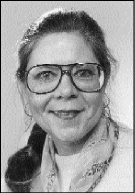 by John Lennox
by John Lennox
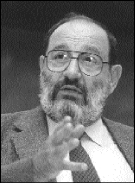 by Sandra Guiry
by Sandra Guiry
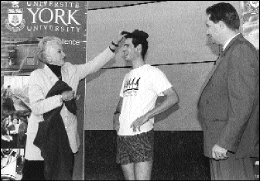 York University graduate Ayden Byle (BA '97) needs as many as five shots of insulin a day to survive. An insulin-dependent diabetic, Byle, 23, is running across Canada to raise money and awareness for diabetes research. As part of his nation-wide run, Byle stopped at York University on Oct. 14.
York University graduate Ayden Byle (BA '97) needs as many as five shots of insulin a day to survive. An insulin-dependent diabetic, Byle, 23, is running across Canada to raise money and awareness for diabetes research. As part of his nation-wide run, Byle stopped at York University on Oct. 14.
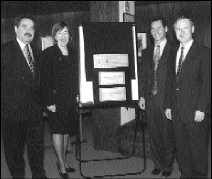

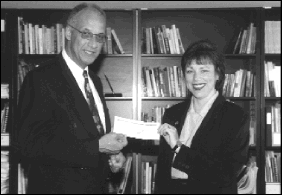 by Mary Ann Horgan
by Mary Ann Horgan
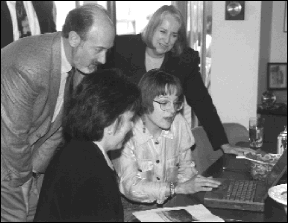
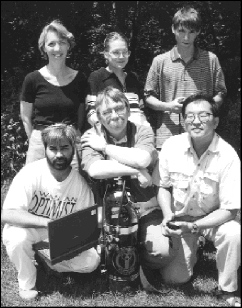
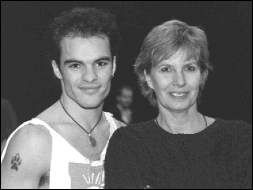 by Sandra Guiry
by Sandra Guiry
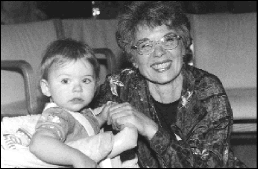
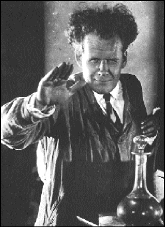 For many people, the classic image from Sergei Eisenstein's film work is the baby carriage rolling out of control down a large staircase in the Odessa Steps sequence of his 1925 film, Battleship Potemkin.
For many people, the classic image from Sergei Eisenstein's film work is the baby carriage rolling out of control down a large staircase in the Odessa Steps sequence of his 1925 film, Battleship Potemkin.